Wondering what sandbags are? Well, you could make one yourself. You only need bags and sand. Fill up the bags with sand then build a small wall against places you need to keep water from getting to. Since the Revolutionary War, this method has proven easy to deploy, and install, and a go-to for areas that experience less risky floods. However, areas with higher flooding risks need a more reliable, versatile, and affordable solution.
This guide will help you get a 360-degree understanding of flooding solutions to employ when sandbags fall short. We list the 5 best sandbag alternatives and when to use each.
Why You Shouldn’t Use Sandbags for Flooding
You might already guess why people don’t rave about sandbags anymore, from the previous section. Well, besides accessing more reliable flooding solutions, there’s a whole serious issue with sandbags. Let’s talk about that!
Limited usage
It’s not enough to say that you can use sandbags for all your flooding needs. You’ll realize that sandbags are only instrumental when you experience light flooding. Otherwise, they are going to be swept away by heavy floods. No matter how big the wall of sandbags you build, the heavy waters will surely sweep them away and inundate your pro perty. Hence the need for a more versatile sandbag alternative.
Needs so much time to install
One sandbag weighs about 13 kg. Meaning, you’ll require a day’s or two days’ work if you need to build a few-foot-high wall around your property. Imagine the hassle of filling 100 bags with 13 kgs of sand each and carrying them to their destination. There’s also the need to arrange them in order to ensure that they offer enough protection against the flood waters. This too, is hectic and calls for easy-to-install alternatives to sandbags.
Negative environmental impact
Getting and using sandbags poses a significant threat to the environment. This starts when they are used in highly flooding areas and hence swept away to landfills or rivers. As sandbags are made of non-biodegradable plastic, their manufacture, and disposal involve the burning of non-biodegradable material which emits greenhouse gases. To do away with this problem once and for all, get a sandbag alternative that’s made of decomposing material.
Health risks
Sand tends to accumulate anything that comes its way. Since the flood water carries along every kind of contamination, some of these unhygienic contaminants will end up in the sandbags. After a while, the wet sandbag will be a breeding home for fungi, bacteria, parasites, and mold among others. If not well-handled and disposed, this will spread disease-causing bacteria and spark a bout of infections in your home. Instead of going this way, why not get reusable, PVC sandbag alternatives?
Costly
Initially, you’ll get the equipment at a fairly cheap price. But employing this method will painfully chunk out your savings on transportation and labor. As the process of installing the sandbags is backbreaking, you’ll spend mega bucks to have the workers compensated. Whereas some sandbag alternatives will only require you to position them well and they will fill up with flood water and keep your property protected.
That being said, you might wonder what to use in place of sandbags for flooding. Let’s get to it!
5 Reliable Alternatives to Sandbags for Flooding
1. VEVOR Flood Bag
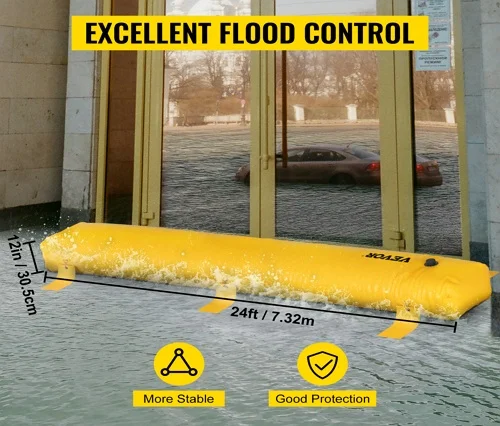
If you can’t decide which option to bank on for flood protection, we’ll straight up tell you that VEVOR is it. Well, just like in any other case, the VEVOR Flood Bag isn’t flawless. However, we rank these options according to their performance and how much their pros outweigh their cons. So, in this case, when the pros and cons are placed on a scale, the pros throw the cons up the roof!
What are we talking about?
Excellent performance: performance goes hand in hand with the size of the sandbag. In this case, the VEVOR flood bag comes in a majestic 24” L x 20” W x 12” H size, enough to dominate your driveways, doorways, and garage doors among others. This size equates to a 288.7 gallons capacity whereas the bag is as heavy as 2425 pounds. This makes it sturdy enough to ensure that your property is protected from water.
Durable PVC material: The VEVOR flood bag is made of sturdy PVC material that endures abrasion through repetitive usage. The bag can confidently sit outside your garages and doorways season after season while performing as well as the first day. You’ll only need to fill it with water after placing it in the perfect position and then forget about it. After the rains, you can ceremoniously drain all the water and store it well as you await the thrill of taking it out during the next rain.
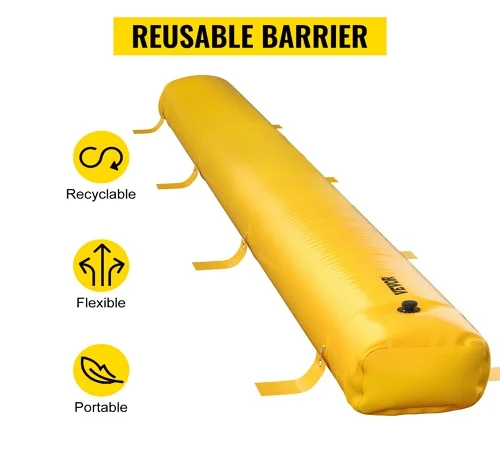
Lightweight and stackable: This feature ranks VEVOR’s flood bag among the most preferred sandbag alternatives for flooding. The bag, though majestic when filled with water, can be folded into a small bag when empty, occupying small shelf space. Besides, the empty bag only weighs 23.2 pounds. Meaning that your child can take it out when you’re not around.
Versatile usage: Have you thought of getting a sandbag alternative that does more than just protect you from floods? The VEVOR flood bag comes in handy for disaster preparedness such as hurricanes and soil erosion control. Besides, the bag can fit anywhere including roads, dams, doorways, and pavements among others.
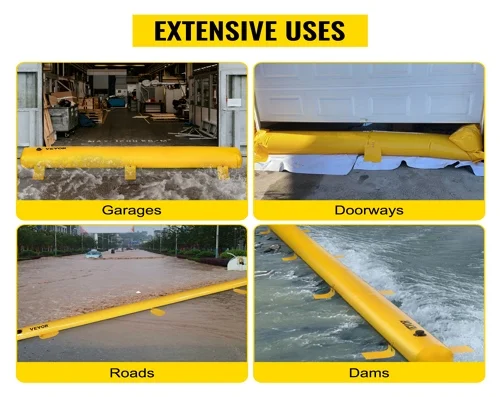
Excellent reinforcement system: You simply need to use guord hooks to keep the D-rings attached to the main body. Use heavy equipment to press the D-rings so that the bag is in a perfect position.
Easy installation:
1. Place the PVC bag in the target area.
2. Get the water pipe and insert it into the bag through the valve
3. Fill the bag with water to the desired height before closing the valve tightly.
Pros:
- Long and flexible for any use
- Large capacity, hence, reliable flood solution
- High value for the money
- Reusable
- Easy to install
Cons:
- Can develop mold when stored while wet
- Its eventual disposal will result in greenhouse gas emission
2. HydraBarrier Flood Bag

Second in line is the HydraBarrier Flood Bag that’s somewhat similar to the VEVOR flood bag. When compared to VEVOR, this flood bag comes small and is made of less sturdy material. But there’s so much good about this alternative for sandbags. Let’s delve!
Good standard size: This eco-friendly option comes in a good standard size of 24” L x 8” W x 4” H. Well, this size is curated to address your doorway applications whether to your house or store. The size equates to 30 gallons of water and has a total weight of 241 pounds. But if this size is too small to address your needs, you can go up the size with a 24 feet long flood bag.
Waterproof material: Hydrabarrier flood bag is made of Industrial Strength Vinyl. This serves its waterproof and sturdy nature, keeping your assets entirely safe from water. Because of this feature, the flood bag will always show up at your doors every rainy season. Note that this depends on how well they are stored.
Foldable and stackable: Have you thought of getting a sandbag alternative that can be easily kept away? The HydraBarrier is it. The flood bag’s material is soft enough to be folded without developing fault lines. Note that it should be stored when completely dry and away from sharp objects.
Easy installation: Deploying the HydraBarrier flood bag is typically the same as the VEVOR flood bag. Be sure to keep the valve tight so that the pressure from the flood water doesn’t push out the water inside the bag.
Reusable: The bag lasts longer than multiple sandbags used at once. Store it in a cool dry place.
Pros:
- Durable
- Price-friendly
- Lightweight and easily stored
Cons:
- Can develop molds if stored wet
- Its manufacture and disposal involve greenhouse gas emission
3. Quick Dam Water Activated Flood Bags
When compared to the above two sandbag alternatives, the method of operation of the Quick Dam Flood Bag is different. As the name suggests, the flood bag is water activated – uses water to develop a barrier against water.
In simple terms, instead of sand, this bag has a special type of powder that absorbs water to saturation. As it absorbs the water, its size increases. After reaching its saturation point, the bag acts as a barrier against incoming flood water.
The good thing about this powder is its fast absorption abilities. It only takes a few minutes for it to get water-logged before which it cannot allow water through it. Besides, it rises up to 3.5 inches high.
This option is mainly used in farms because of its biodegradable nature. Think of being able to get a flood barrier that will eventually decompose and hence mean good to your crops! Sounds like striking two birds with one stone, right?
This is good for all of us who don’t love the hassle of carrying away heavy, dump flood bags after the rains. Meaning, with this sandbag alternative, you can simply forget about it the moment you install it without having problems with authorities.
Besides, you won’t have to increase your water bill by using this option because the powder is activated by flood water. While you can stock them for years with the powder still valid for use, their shelf life after use is also something to consider.
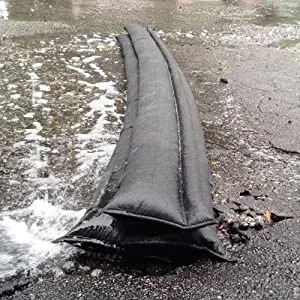
Pros:
- More durable than sandbags
- No need for water
- Environment-friendly and easy disposal
- Price-friendly
Cons:
- Cannot be used in heavy flooding
- May only serve two rainy seasons
4. AquaSafe Flood Bag
While it’s more expensive than we thought, the flood bag is super effective, easy to install, compact, and lightweight. The bag uses the same principle as Quick Dam flood bags and can be used as a water absorbent.
The AquaSafe flood bag is constructed using Polypropylene, a Hydrophilic filler that ensures fast water absorption. Besides flood protection, the bag can be used to dry areas or surfaces. As it contains a super-quick absorbent, the bag won’t allow any water through it even after its saturation.
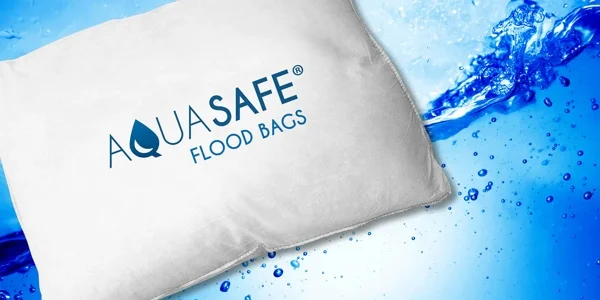
With 22.9” x 16.8” x 12.1”, the bags can sit comfortably on your doorsteps, garage, driveways, gateways, and pavements. However, you might need a few bags if you need to build a few-foot-high wall. Due to their compact size, the bags can be arranged well to perfectly fit their designated area when used as sandless flood bags.
Versatile usage: As aforementioned, the AquaSafe Flood Bag is up to the task in such scenarios as leaking toilets, overflowing cisterns, spilled liquids, and leaking sinks. In this case, they are used as water-absorbent pads.
Pros:
- No need to fill it with water
- Very durable
- Reusable
- Lightweight and easy transportation
- Versatile
Cons:
- Expensive
- Not environmentally friendly
5. NoFloods FlexWall
Here’s a huge alternative to sandbags for flooding. The NoFloods FlexWall covers big areas like farms or ranches among others. Hence, to get this bag, you must be prepared to spend so much more than the previous option and it will prove worth the money.
Features:
Massive size: The flood bag is not only usable in big areas but also in areas with severe flooding. The bag’s height ranges between 10 and 60 inches. Hence the need to understand your size needs and the intensity of the floods.
Price-friendly operation: After draining all your savings, the least you want to hear is the additional cost of operating the flood bag. The bag adopts two methods, going between the VEVOR and the Quick Dam flood bags. Meaning that the bag uses the flood water to fill up and bulge. After filling up, just like the VEVOR, its waterproof material won’t allow the water through it.
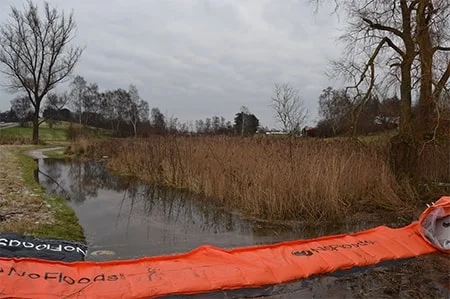
Pros:
- Used for large-scale flood protection
- Highly durable
- Eco-friendly and reusable
Cons:
- Can’t be used in small areas like doorways
- High purchase and maintenance costs
It’s hard to say that there’s one solution that meets all flooding needs. Your choice of an option will be subjective to a few factors as discussed in the next section.
Factors to Consider When Choosing a Sandbag Alternative
- Effectiveness: You want to get a sand bag alternative that does its job well. This boils down to the quality of the material and its size so that it snugly fits where you place it.
- Ease of use: A good alternative to sand bag will require no degree to install. Speaking of labor, good options only require you to fill them with water or leave them to absorb flood water.
- Cost: Does the sandbag alternative you pick empty your savings? How durable is it?
- Availability: You want to get accustomed to a sandbag alternative that you can easily access even during emergencies.
- Durability: Take time to determine which sandbag alternative will serve you for the longest time. Generally speaking, PVC flood bags are the most durable and wear-resistant.
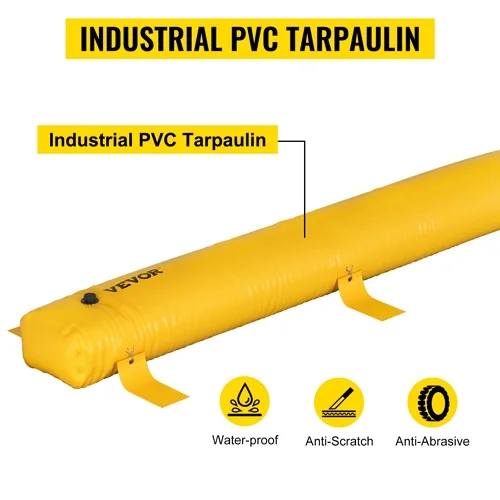
After deciding which option to go with, a few questions may still linger. Let’s answer them in the next section.
FAQ About Sandbag Alternative
Q1. How long do sandbag alternatives last?
Different options have different shelf lives. However, the PVC flood bags like VEVOR’s last for a few years. Sandless flood bags like Quick Dams’ could serve you for two or three rainy seasons. Other sandbag alternatives like NoFloods FlexWalls can go for as many rain seasons as you want, provided you store them well and in a cool and dry place.
Q2. Are there any environmental concerns with using sandbags?
Yes! As sandbags absorb flood water, they tend to trap dirt and contaminants. If not disposed of correctly, sandbags could be a cause of poor hygiene-related diseases like cholera, bilharzia, etc. Besides, their manufacture and disposal involve the burning of harmful gases, resulting in air pollution. Inhaling of such gases results in respiratory diseases as well.
Q3. When should I use sandbags instead of alternative options?
When you don’t need water-tight protection like in houses, or when you need to redirect the current of a stream. They are also used in farms as an effective soil erosion control. Besides, sandbags are a go-to for light flooding protection.
Conclusion
So far, you realize that your choice of a sandbag alternative should be informed by your needs. The items on the list above only offer temporary flooding solutions, even as their longevity varies. Your choice will be determined by the cause of flooding, whether it is temporary or not, and how much you’re willing to spend.
The VEVOR flood bag is versatile enough to solve several flooding problems. Other sandbag alternatives like Quick Dams flood bags are preferred for their ease of dumping. This is because the powder in the bag decomposes after a while. Start by understanding your irreducible minimums before banking on an option. The priority need for the sandbag alternative you’re looking for should inform your choice of performance, durability, and size.

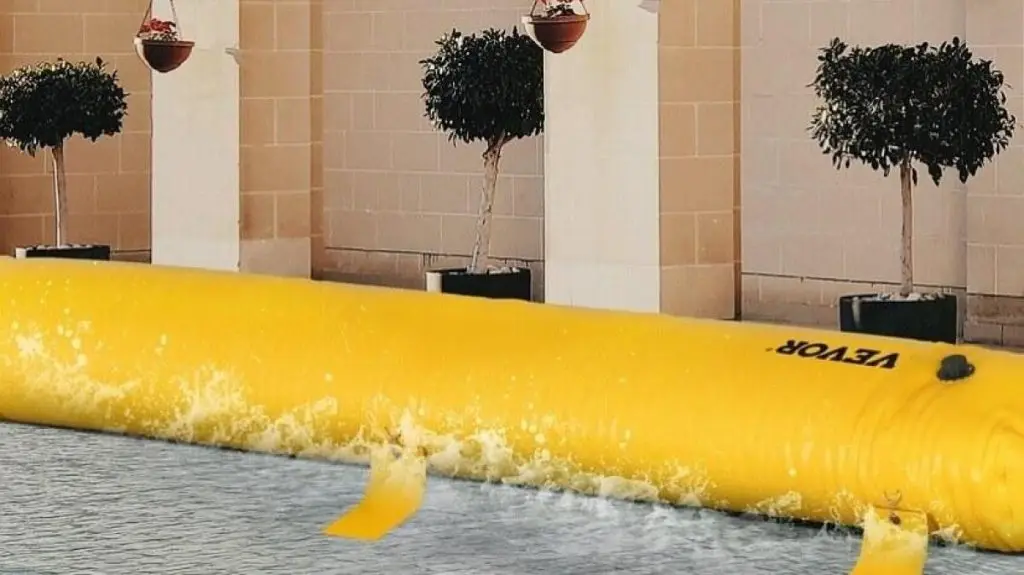

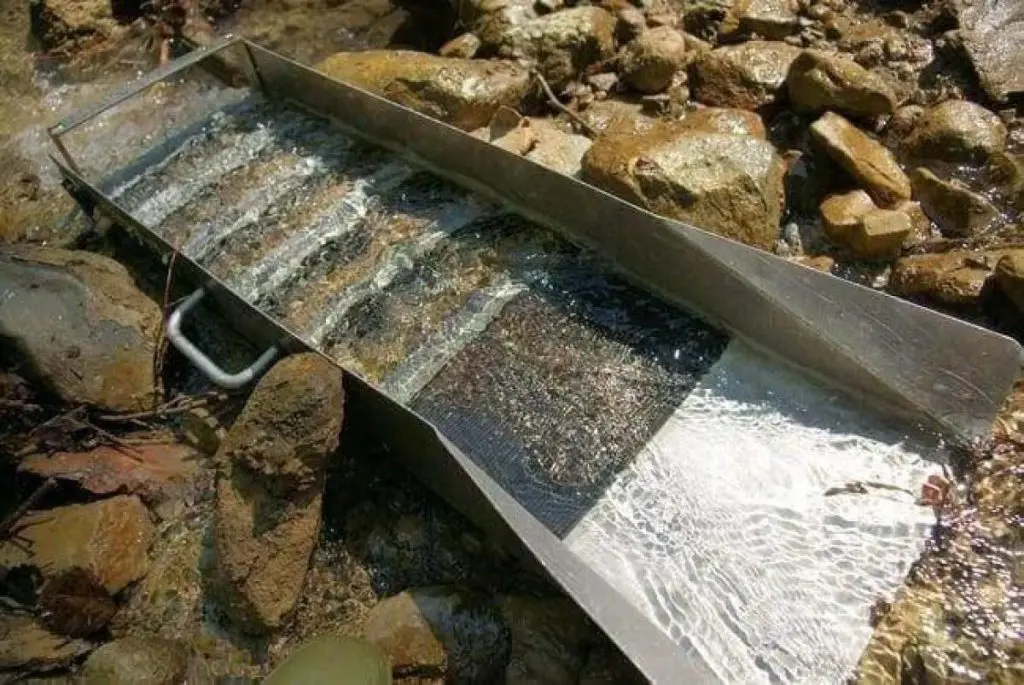
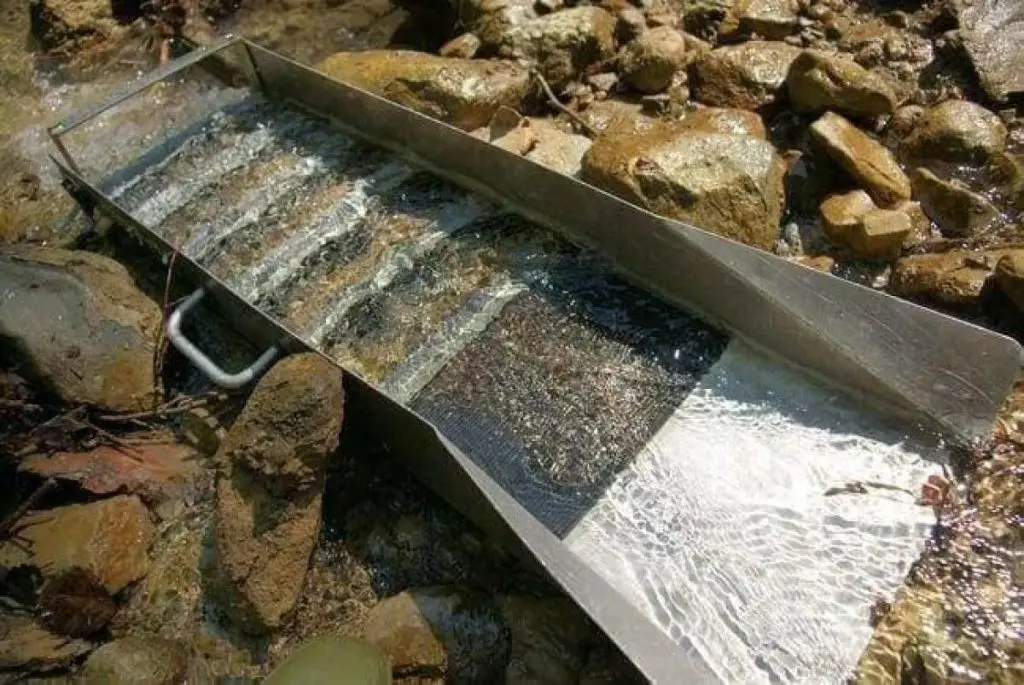

I appreciate your detailed article on inflatable sandbags, which thoroughly highlights their benefits and the drawbacks of traditional sandbags. As someone with 10 years of experience in the water-absorbent resin industry, I would like to make a small correction and share some insights. The various products mentioned in the article are essentially the same, with the material inside being water-absorbent resin. This resin’s excellent water absorption and expansion properties make it a promising material for flood prevention. I am optimistic about the application potential of water-absorbent resin in inflatable sandbags. Your article is detailed and comprehensive, providing readers with a deep understanding of the material’s characteristics. Thank you for the opportunity to express my thoughts.
Hi Simon, thank you for your insights on our inflatable sandbags article. Your correction and expertise in water-absorbent resin are appreciated. We share your optimism about its potential in flood prevention. Your feedback enhances the value of our content, and we’re glad you found the article comprehensive.